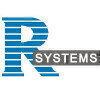Filter interviews by
ION Group Software Developer Interview Questions and Answers
13 Interview questions
Time complexity of binary tree refers to the amount of time it takes to perform operations on the tree based on its size.
Time complexity for searching, inserting, and deleting in a binary tree is O(log n) on average.
In worst case scenarios, time complexity can be O(n) for operations like searching if the tree is unbalanced.
Balanced binary trees like AVL trees or Red-Black trees ensure O(log n) time complexity for ...
Encapsulation, Inheritance, Polymorphism, Abstraction
Encapsulation: Bundling data and methods that operate on the data into a single unit
Inheritance: Ability of a class to inherit properties and behavior from another class
Polymorphism: Ability to present the same interface for different data types
Abstraction: Hiding the complex implementation details and showing only the necessary features
Implement stack using linked list
Create a Node class with data and next pointer
Create a Stack class with top pointer
Implement push, pop, and peek methods by manipulating the linked list
Find the longest common prefix among an array of strings.
Iterate through the characters of the first string and compare with the corresponding characters of other strings.
Stop when a mismatch is found or when reaching the end of any string.
Return the prefix found so far.
Check if a binary tree is a valid binary search tree (BST) based on node values.
A BST is defined such that for any node, all values in the left subtree are less, and all values in the right subtree are greater.
Use a recursive approach to validate each node against a range of valid values.
Example: For the tree with root 2, left child 1, and right child 3, it is a valid BST.
Example: For the tree with root 5, left ch...
Implementing design using hashmap for efficient key-value storage and retrieval.
Create a hashmap object to store key-value pairs.
Use put() method to add key-value pairs to the hashmap.
Use get() method to retrieve values based on keys.
Handle collisions using chaining or open addressing techniques.
Consider resizing the hashmap if load factor exceeds a certain threshold.
Find the most occuring element in array of strings
Iterate through the array and count the occurrences of each element
Keep track of the element with the highest count
Return the element with the highest count
A Payment Management System can be designed using the four pillars of object-oriented programming: encapsulation, inheritance, polymorphism, and abstraction.
Encapsulation: Hide the internal implementation details of payment processing and provide a public interface for interacting with the system.
Inheritance: Create a hierarchy of payment classes such as CreditCardPayment, PayPalPayment, etc. to reuse common funct...
SQL uses primary keys to uniquely identify records in a table, while NoSQL databases use unique keys for the same purpose.
SQL databases use primary keys to uniquely identify each record in a table, typically using an auto-incrementing integer value.
NoSQL databases use unique keys to achieve the same purpose, but the key can be any unique value, not necessarily an integer.
In SQL, primary keys are used to enforce en...
Reverse a linked list by changing the direction of pointers
Start with three pointers: current, previous, and next
Iterate through the linked list, updating pointers to reverse the direction
Update the head of the linked list to be the previous node
ION Group Software Developer Interview Experiences
21 interviews found
I applied via Campus Placement and was interviewed in Jul 2024. There were 3 interview rounds.
3 questions of dsa based on dp and trees
(3 Questions)
- Q1. Valid BST leetcode question
- Ans.
Check if a binary tree is a valid binary search tree (BST) based on node values.
A BST is defined such that for any node, all values in the left subtree are less, and all values in the right subtree are greater.
Use a recursive approach to validate each node against a range of valid values.
Example: For the tree with root 2, left child 1, and right child 3, it is a valid BST.
Example: For the tree with root 5, left child 1...
- Q2. Common puzzles found on gfg
- Q3. Questions on object oriented programming
Optimize delivery between warehouse to the person ordered.
Interview Preparation Tips
- trees
- puzzles
- DP
Skills evaluated in this interview
I applied via Campus Placement and was interviewed in Jul 2024. There were 3 interview rounds.
There will be first round of aptitude+ coding in which 2 coding questions are asked and 24 aptitude question
(2 Questions)
- Q1. Find the most occuring element in array
- Ans.
Find the most occuring element in array of strings
Iterate through the array and count the occurrences of each element
Keep track of the element with the highest count
Return the element with the highest count
- Q2. Implement design using hashmap
- Ans.
Implementing design using hashmap for efficient key-value storage and retrieval.
Create a hashmap object to store key-value pairs.
Use put() method to add key-value pairs to the hashmap.
Use get() method to retrieve values based on keys.
Handle collisions using chaining or open addressing techniques.
Consider resizing the hashmap if load factor exceeds a certain threshold.
This round is easy just to check you soft skills
Interview Preparation Tips
- OOPS
- DBMS
- DSA
- Puzzle
- OS
Skills evaluated in this interview
I applied via Campus Placement and was interviewed in Jul 2024. There was 1 interview round.
(3 Questions)
- Q1. Reverse a linked list
- Ans.
Reverse a linked list by changing the direction of pointers
Start with three pointers: current, previous, and next
Iterate through the linked list, updating pointers to reverse the direction
Update the head of the linked list to be the previous node
- Q2. Theoretical knowledge on data structures,how actually implemented in real word
- Q3. Oops concepts ,logical puzzels
Skills evaluated in this interview
I applied via Campus Placement and was interviewed in Jul 2024. There were 2 interview rounds.
Technical, Aptitude and 2 Coding Questions
(2 Questions)
- Q1. Discussion on resume projects and internships
- Q2. Payment Management System using four pillars of object oriented programming
- Ans.
A Payment Management System can be designed using the four pillars of object-oriented programming: encapsulation, inheritance, polymorphism, and abstraction.
Encapsulation: Hide the internal implementation details of payment processing and provide a public interface for interacting with the system.
Inheritance: Create a hierarchy of payment classes such as CreditCardPayment, PayPalPayment, etc. to reuse common functional...
I applied via Campus Placement and was interviewed in Jul 2024. There were 2 interview rounds.
Basic question of arrays
(2 Questions)
- Q1. Dsa , logical aptitude and puzzles
- Q2. Oops fundamentals and prog
90 min, Logical, Verbal
(2 Questions)
- Q1. Longest Common Prefix
- Ans.
Find the longest common prefix among an array of strings.
Iterate through the characters of the first string and compare with the corresponding characters of other strings.
Stop when a mismatch is found or when reaching the end of any string.
Return the prefix found so far.
- Q2. Implement stack using linked list.
- Ans.
Implement stack using linked list
Create a Node class with data and next pointer
Create a Stack class with top pointer
Implement push, pop, and peek methods by manipulating the linked list
Skills evaluated in this interview
I applied via Campus Placement and was interviewed in Jul 2024. There were 2 interview rounds.
Coding Test was online
(2 Questions)
- Q1. Basic DSA asked
- Q2. Basic OOPS was asked
(2 Questions)
- Q1. What are the 4 pillars of OOPs
- Ans.
Encapsulation, Inheritance, Polymorphism, Abstraction
Encapsulation: Bundling data and methods that operate on the data into a single unit
Inheritance: Ability of a class to inherit properties and behavior from another class
Polymorphism: Ability to present the same interface for different data types
Abstraction: Hiding the complex implementation details and showing only the necessary features
- Q2. Explain time complexity of binary tree
- Ans.
Time complexity of binary tree refers to the amount of time it takes to perform operations on the tree based on its size.
Time complexity for searching, inserting, and deleting in a binary tree is O(log n) on average.
In worst case scenarios, time complexity can be O(n) for operations like searching if the tree is unbalanced.
Balanced binary trees like AVL trees or Red-Black trees ensure O(log n) time complexity for all o...
Skills evaluated in this interview
2 coding questions were asked
(2 Questions)
- Q1. Firstly the basic introduction after that regarding oops
- Q2. Dbms and sql basics and project work
Interview Preparation Tips
I applied via Company Website and was interviewed in Jun 2024. There were 2 interview rounds.
Coding questions medium level DSA
(1 Question)
- Q1. Sql, DSA(linkedlist, stacks, greedy algos)
Top trending discussions






ION Group Interview FAQs
The duration of ION Group Software Developer interview process can vary, but typically it takes about less than 2 weeks to complete.
Tell us how to improve this page.
ION Group Interviews By Designations
- ION Group Technical Analyst Interview Questions
- ION Group Software Developer Interview Questions
- ION Group Software Engineer Interview Questions
- ION Group Analyst Interview Questions
- ION Group SDE Interview Questions
- ION Group Sdet Engineer Interview Questions
- ION Group Business Analyst Interview Questions
- ION Group Software Development Engineer Intern Interview Questions
- Show more
Interview Questions for Popular Designations
- Software Engineer Interview Questions
- Java Developer Interview Questions
- Web Developer Interview Questions
- Senior Software Developer Interview Questions
- Application Developer Interview Questions
- Salesforce Developer Interview Questions
- Software Development Engineer Interview Questions
- Developer Interview Questions
- Show more
Overall Interview Experience Rating
based on 19 interview experiences
Difficulty level
Duration
Software Developer Interview Questions from Similar Companies
ION Group Software Developer Reviews and Ratings
based on 20 reviews
Rating in categories
|
Software Developer
176
salaries
| ₹13.6 L/yr - ₹24.2 L/yr |
|
Technical Analyst
89
salaries
| ₹10.8 L/yr - ₹36 L/yr |
|
Software Engineer
68
salaries
| ₹19 L/yr - ₹41 L/yr |
|
Senior Software Engineer
49
salaries
| ₹19 L/yr - ₹51 L/yr |
|
Analyst
34
salaries
| ₹8.7 L/yr - ₹29.9 L/yr |

Thomson Reuters

Oracle Cerner

Chetu

R Systems International
- Home >
- Interviews >
- ION Group Interview Questions

















